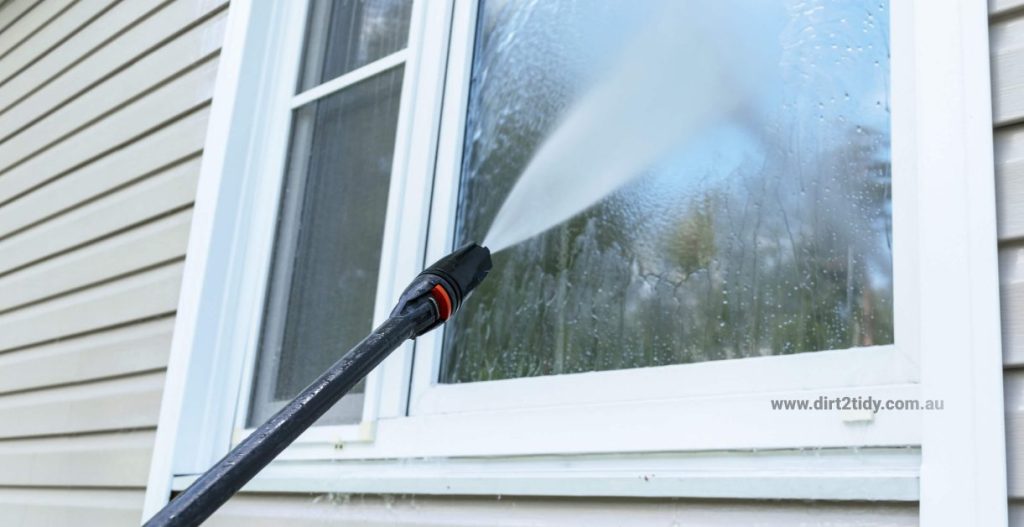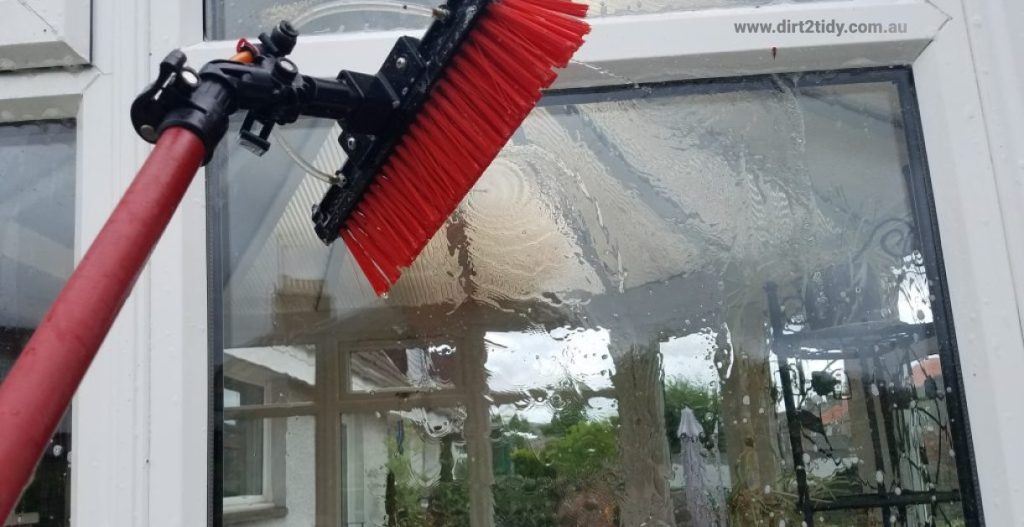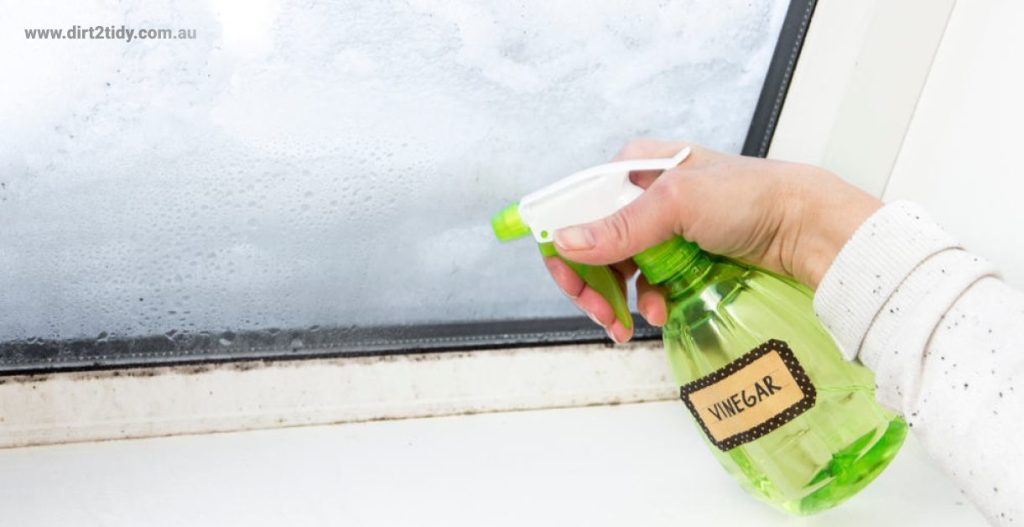Table of Contents
Professional window cleaners run the squeegee continually across the glass until the window is clean. The s-technique is more adaptable and comprehensive than a straight-pull technique followed by professional cleaning services with cleaning solution.
You’ll need these:
- Microfibre cloth
- Sharp-rubber squeegee
- Pro detergent (Windex)
- Window Cleaner

Check for Smudges and Streaks
After you’ve finished cleaning, it’s wise to double-check your handiwork. Move a few steps away from the window and inspect it from various angles in the natural light. Sometimes, streaks and smudges are only visible when the light hits them just right.
Tilt your head, scan the surface both up close and at a distance, and look for any cloudy patches or fine lines the squeegee might have missed. If you spot anything, a quick buff with your microfibre cloth should polish it off, leaving the glass crystal clear. This simple step ensures every window puts its best (and cleanest) face forward.
Pressurised Window Washing with cleaning solution
Pressure washing windows is a fast cleaning method. Properly done, it removes obstinate residue and makes windows seem fresh.
You’ll need these:
- Pressure washer with nozzles
- Pipe
- Pressure washer soap
Take these actions first:
- Understand the machine. Any washer errors might break glass, harm wood, and cause other issues. First-time washer users should read the manual.
- Check the windows. If any are broken, clean them after repairs. Check the frames for locations that require repainting or caulking, as water force might harm the wood.
Once you’re comfortable with the pressure washer and have checked the windows and casings, follow these steps:
- Soak the dirt under each window to dilute the soap chemicals.
- Before starting, make sure the pressure is between 1,200 and 2,000 PSI. Adjust water pressure on the ground.
- Soap the washer’s reservoir with a soaping tip. This tip emits a lower-pressure solution stream than others.
- Activate the washer’s wand. A 45-degree angle will clean the glass, trim, and sill. Spray from the border of each window inward.
- Turn off the machine and use a 15-to-20-degree soaping tip to rinse the windows. Spray window tops down.

WFP Method
An extensible water fed pole with a brush head and pump delivers water on demand. Its 70-foot reach makes it ideal for cleaning multi-story skylights and windows without a ladder. Because it uses pure water, there’s nothing to rinse.
- On the pump, extend the pole.
- Initiate flow.
- Water-brush the entire window twice. Dirt tends to gather on the glass’s top edge. You may need to brush the windows many times if they’re filthy.
Create a “water curtain” by holding the brush head 10 to 12 inches away from the window. Follow the water jets and remove excess water.
Health and environmental considerations make some property owners hesitant to use detergent on their windows. The water supply pole technique uses pure water, so it’s ideal for individuals who don’t want to use chemicals. Find cleaning firms here.
Can Tap Water Be Used to Clean Windows?
When it comes to cleaning windows, water quality matters. Using tap water might seem convenient, but it often contains minerals like calcium and magnesium. These minerals can lead to unsightly spots, streaks, or build-up after the glass dries.
On the other hand, distilled water is free from minerals and impurities, making it a superior choice for achieving streak-free windows. Here’s why distilled water stands out:
- Purity: Distilled water does not contain minerals or other particles that could cause residue.
- Clarity: Without impurities, distilled water evaporates cleanly, leaving no spots behind.
Tips for Sparkling Windows:
- DIY Solution: Mix equal parts of distilled water and white vinegar in a spray bottle for an eco-friendly cleaning solution.
- Squeegee Smart: Use a rubber-edged squeegee to remove water efficiently, ensuring a streak-free finish.
- Microfiber Magic: Dry glass with a microfiber cloth to enhance clarity and avoid lint.
In summary, while tap water can technically be used, for best results, opt for distilled water. It guarantees a crystal-clear view every time, making your hard work worthwhile.
Should You Use Newspaper to Clean Windows?
The old trick of using newspaper to clean windows might bring back memories, but it’s not your best bet. Modern newspapers often have inks and chemicals that can leave behind streaks or even discolor your window frames. Instead, reach for a quality microfiber cloth—unlike newspaper, it’s designed to lift away dirt and polish glass without leaving behind lint or marks.
Microfiber cloths are reusable, gentle on glass, and far more effective at delivering that flawless, streak-free finish. If you’re after professional results and don’t want to risk ink smudges, microfiber is the way to go.

Cleaning Solution Used
Every rope access specialist has their preferred detergent, whether it’s commercial or homemade. As long as it eliminates stains, cleans the glass, lubricates the window surface, it’s plenty.
A popular choice among professionals is a simple mix of liquid dish soap and distilled water. This combination is favored because it effectively breaks down grime and build-up, ensuring a thorough clean. The liquid dish soap, such as Dawn or Palmolive, also allows your squeegee to glide effortlessly across the glass, removing excess water and eliminating residue.
Distilled water is preferred because it won’t leave behind water spots, which are a common issue with tap water. For those looking to enhance their cleaning solution, some experts add a touch of ammonia to boost cleaning power, or opt for a commercial cleaning product designed specifically for windows.
This straightforward and affordable solution is a go-to for achieving a streak-free shine, making it a reliable choice for both professionals and DIY enthusiasts alike.
Why Liquid Dish Soap and Distilled Water Work So Well
Liquid dish soap is remarkably effective at breaking down stubborn grime, greasy fingerprints, and environmental build-up on window surfaces. When combined with distilled water—which has no minerals to leave behind unsightly spots—you get a gentle yet powerful cleaner that leaves glass crystal clear. The soapy mixture also helps your squeegee glide smoothly, picking up every drop and preventing streaks.
Some seasoned window cleaners occasionally add a splash of ammonia for extra cleaning muscle, especially when tackling especially grimy or outdoor windows. Others might keep a preferred commercial window cleaning product in their toolkit for particularly tough jobs.
Choosing the Right Amount—and Type—of Cleaner
It’s important to be selective about your cleaning products and how much you use. Abrasive detergents can cause tiny scratches on window glass, dulling the surface and leaving it vulnerable to permanent damage over time. Instead, opt for gentle cleaners like diluted dish soap.
Equally, using too much soap is a common pitfall. An overly sudsy solution often leaves behind a sticky residue that clings to dust and debris, making the windows get dirty more quickly. A little goes a long way—just a few drops of a mild dish soap like Dawn or Palmolive in distilled water is plenty to get your windows sparkling without any risk to the glass or extra cleaning headaches later.




